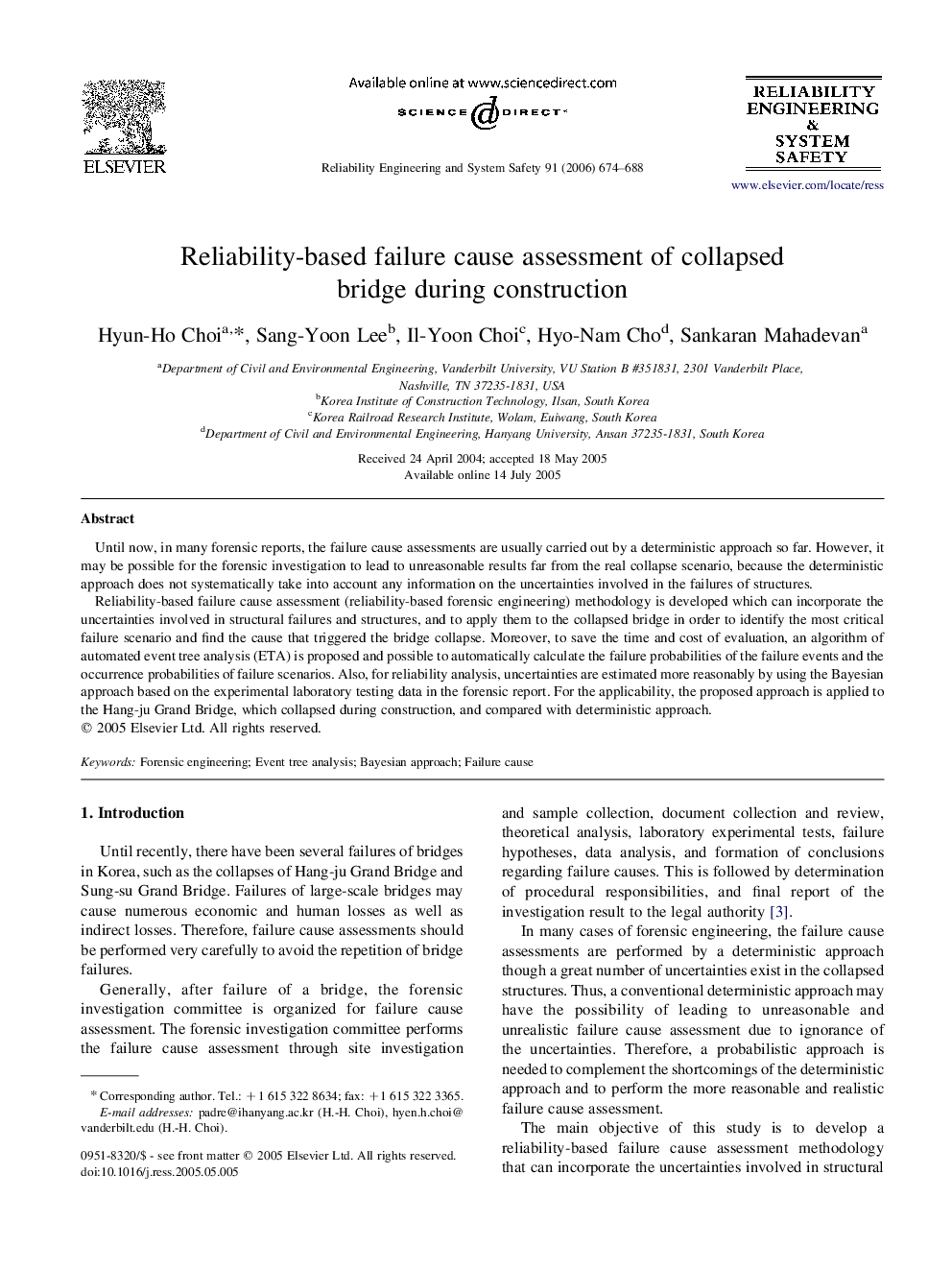| Article ID | Journal | Published Year | Pages | File Type |
|---|---|---|---|---|
| 806583 | Reliability Engineering & System Safety | 2006 | 15 Pages |
Until now, in many forensic reports, the failure cause assessments are usually carried out by a deterministic approach so far. However, it may be possible for the forensic investigation to lead to unreasonable results far from the real collapse scenario, because the deterministic approach does not systematically take into account any information on the uncertainties involved in the failures of structures.Reliability-based failure cause assessment (reliability-based forensic engineering) methodology is developed which can incorporate the uncertainties involved in structural failures and structures, and to apply them to the collapsed bridge in order to identify the most critical failure scenario and find the cause that triggered the bridge collapse. Moreover, to save the time and cost of evaluation, an algorithm of automated event tree analysis (ETA) is proposed and possible to automatically calculate the failure probabilities of the failure events and the occurrence probabilities of failure scenarios. Also, for reliability analysis, uncertainties are estimated more reasonably by using the Bayesian approach based on the experimental laboratory testing data in the forensic report. For the applicability, the proposed approach is applied to the Hang-ju Grand Bridge, which collapsed during construction, and compared with deterministic approach.
